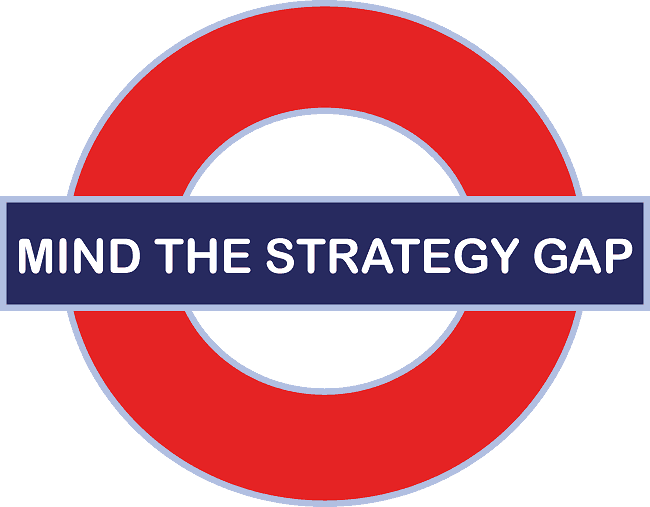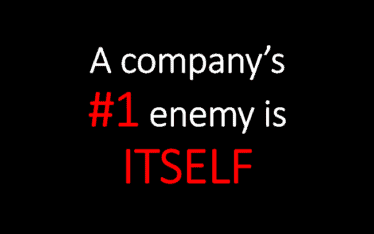Pre-flight checklist
A pilot would never take off on a flight without going through their pre-flight checklist to ensure they have everything prepared for a safe flight. With the right preparation, the pilot consistently takes off and lands safely.
Similarly, to be successful, organizations clearly need great organizational culture and a great strategy, but without the habits to consistently execute well, they get lost in the day-to-day and critical activities fail to get accomplished.

Top 8+ success factors for effective strategy execution
Five percent of the challenge is the strategy. Ninety-five percent is the execution. At the end of the day, the most disciplined organization, the organization which gives a lot of importance to processes, ends up prevailing
Drive sustainable and repeatable success in managing strategic initiatives:
#1 – Aspirations
- Do we have enough clarity about the vision, the strategic priorities, and the results the company wants to accomplish? Is it clear enough WHY these are important?
- Do we have a longer-term horizon or mainly a short-term focus? Why?
- Are employees stimulated early in the decision-making process to contribute their experiences/ideas? Are they invited to think along in creating the vision and strategy? Are they co-owners?
- Does this clarity exist throughout the organization or only in specific parts of the organization?
- Can each organization or division articulate the aspiration and initiatives in terms specific to their business?
- Do employees understand their role in achieving the strategy?
- Are the employees committed to achieving this strategy?
- Does the aspirations create energy, a passion to win, in the organization?
#2 – Targets and goals – translating aspirations into calls to action
- Is there is a clear link between our targets and goals and our stated aspiration?
- Is there any room for misinterpretation of the intent or desired outcome for any plan goals?
- Do we have a robust process to allocate and re-allocate resources?
#3 – Performance information
- Do we have the necessary business information, performance scorecards and metrics to execute our strategy and assess progress?
- Are key performance indicators identified for the organization?
- Are we holding people accountable for results?
- Are success oriented habits and attitudes developed and reinforced?
- Do we do both internal and external benchmarking to avoid complacency?
#4 – Employee feedback and input
- Is ongoing employee feedback and input systematized to remove obstacles and identify opportunities?
- Is employee hassles/ideas/suggestions/issues being collected?
- Is there is a systematic process for addressing issues and opportunities?
#5 – Strategy and business reviews
- Is there a regular review process in place with weekly/bi-weekly, monthly, quarterly meetings?
- Are strategy and business reviews action-driven processes used for both tracking progress and solving problems quickly?
#6 – Organizational structure
- Are decisions are made quickly by a few responsible owners and not bogged down by hierarchy and structure?
- Are your organizational structure, processes and systems well aligned with the new strategy and goals?
#7 – Communication
- How do we monitor progress and success? How do we report and communicate results?
- Are data presented graphically to help visualize trends?
- How do we communicate and share successes with each other?
#8 – Compensation system
- Is our compensation system aligned with the strategy?
- Is our incentive/reward system aligned with the strategy?
#9 – Consequence management
- How do we maintain focus throughout the organization? How do we detect when we slide out of focus? How do we correct?
- Do we have a visible and quick process for identifying success or failure?
Organizational culture is the foundation
The old saying – “culture eats strategy” is a powerful reminder that culture can be ignored at your peril. Where the strategy is relatively stable or changes incrementally, the culture will most likely support your plans. But where the strategic plan requires significant change, hard questions need to be asked at the planning stage as to the organisation’s readiness for the change.
Culture is the foundation of HOW the organization works and HOW work will be completed on the plan in order to realize the key outcomes. By aligning planning with culture, it is possible to harness the organization’s potential to dominate within their market place.
The better the organization becomes at achieving strategic priorities and results, the more confidence and trust will grow within the organization.
Short URL & Title:
Top 8+ success factors for effective strategy execution — http://www.torbenrick.eu/t/r/esn
Share it:
If you enjoyed this article, please take 5 seconds to share it on your social network. Thanks!








About The Author
Torben Rick
Experienced senior executive, both at a strategic and operational level, with strong track record in developing, driving and managing business improvement, development and change management. International experience from management positions in Denmark, Germany, Switzerland and United Kingdom